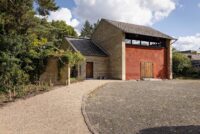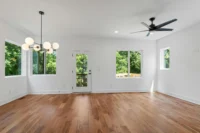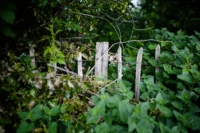- Home
- Articles
- Architectural Portfolio
- Architectral Presentation
- Inspirational Stories
- Architecture News
- Visualization
- BIM Industry
- Facade Design
- Parametric Design
- Career
- Landscape Architecture
- Construction
- Artificial Intelligence
- Sketching
- Design Softwares
- Diagrams
- Writing
- Architectural Tips
- Sustainability
- Courses
- Concept
- Technology
- History & Heritage
- Future of Architecture
- Guides & How-To
- Art & Culture
- Projects
- Interior Design
- Competitions
- Jobs
- Store
- Tools
- More
- Home
- Articles
- Architectural Portfolio
- Architectral Presentation
- Inspirational Stories
- Architecture News
- Visualization
- BIM Industry
- Facade Design
- Parametric Design
- Career
- Landscape Architecture
- Construction
- Artificial Intelligence
- Sketching
- Design Softwares
- Diagrams
- Writing
- Architectural Tips
- Sustainability
- Courses
- Concept
- Technology
- History & Heritage
- Future of Architecture
- Guides & How-To
- Art & Culture
- Projects
- Interior Design
- Competitions
- Jobs
- Store
- Tools
- More
Enhancing Urban Life: Best Practices for the Design of Walkways in Urban Areas
Discover the transformative role of urban walkway design in creating safer, sustainable, and connected cities. Explore how thoughtful planning enhances pedestrian mobility, fosters community spaces, reduces vehicle dependency, and integrates green, eco-friendly features.

Walkways are the veins of our urban landscapes, connecting people, places, and possibilities. Their design isn’t just about aesthetics; it’s about creating spaces that are safe, accessible, and inviting for everyone. In bustling cities, where every square foot matters, well-designed walkways can transform how we move and interact with our surroundings.
As urban areas grow and evolve, the need for thoughtful walkway design has never been greater. From accommodating pedestrian flow to integrating green spaces, the choices we make in designing these pathways shape the way we experience city life. It’s not just about getting from point A to B—it’s about enhancing the journey in between.

Table of Contents
ToggleImportance Of Walkways In Urban Areas
Walkways serve as essential components of urban infrastructure, promoting safe and efficient pedestrian mobility. They encourage walking as a primary mode of transportation, reducing dependency on vehicles and lowering urban congestion. Well-designed walkways with proper lighting, signage, and pathways improve public safety, especially in high-traffic areas.

Walkways support environmental sustainability by reducing air pollution when fewer people rely on motorized transport. Green walkways that incorporate vegetation help mitigate urban heat island effects and improve air quality. Integrating sustainable materials in walkway construction further enhances their environmental impact.
Economic benefits often stem from walkways in vibrant urban areas. Pedestrian-friendly zones attract foot traffic to local businesses, increasing economic activity. Walkways designed with accessibility standards, like those outlined by the ADA, create inclusive spaces for all, expanding community participation in economic, social, and cultural activities.
Social connectivity enhances through walkways as they foster human interaction. Public spaces connected by them encourage community activities and recreational use. Incorporating creative designs, seating areas, and green sections further transforms them into spaces of leisure and engagement.
Walkways also contribute to public health by encouraging physical activity. According to the CDC, consistent walking can reduce the risk of chronic diseases like heart conditions and obesity. Walkable urban areas promote healthier lifestyles, impacting both physical and mental well-being.
Key Principles Of Walkway Design
Careful consideration of key principles enhances the functionality and appeal of urban walkways. These principles ensure spaces meet the needs of diverse users and integrate seamlessly into urban environments.

Accessibility And Inclusivity
Walkways should accommodate all users, including individuals with disabilities. Features like curb cuts, tactile paving, and wide paths improve accessibility. Compliance with ADA standards guarantees equitable access. For inclusivity, maintaining a smooth surface and minimizing obstructions is essential. Incorporating clear signage with multiple language options ensures everyone can navigate efficiently.
Safety And Security
Ensuring pedestrian safety reduces accidents and increases walkability. Adequate lighting minimizes crime and enhances visibility at night. Using non-slip surfaces and proper drainage design prevents falls in adverse weather. Installing barriers like bollards provides protection from vehicular intrusions. Clear demarcation of crosswalks using contrasting materials or raised surfaces provides visual cues for safe crossings.
Aesthetic Appeal
Visually appealing walkways enhance the urban experience and attract more users. Incorporating greenery, such as planters or tree-lined paths, improves air quality and creates natural shading. Using varied paving styles and colors adds character while guiding pedestrians seamlessly. Placing seating areas and public art elements encourages rest and cultural engagement.
Materials And Construction Techniques
Selecting the right materials and construction methods influences the longevity, usability, and environmental impact of urban walkways. Thoughtful choices enhance safety, reduce upkeep costs, and align with sustainability goals.

Sustainable Materials
We prioritize eco-friendly materials like permeable pavers, recycled concrete, and reclaimed bricks for urban walkways. Permeable pavers allow water to pass through, reducing runoff and aiding groundwater recharge. Recycled concrete helps lower construction waste while providing reliable structural integrity. Reclaimed bricks, when sourced locally, minimize transportation emissions and preserve resources.
Vegetation barriers and tree planters often incorporate environmentally conscious materials like recycled composites. These materials resist weathering and extend their lifespan, making them ideal for green urban spaces. To further reduce environmental impact, we use low-VOC (volatile organic compounds) sealants that minimize air pollution during application.
Durability And Maintenance
Durable design is essential for walkways in high-traffic areas. We use materials such as high-strength concrete and asphalt mixes treated with polymer additives to withstand significant wear and weather exposure. These enhancements help resist cracking, warping, or erosion caused by heavy usage and environmental fluctuations.
Low-maintenance finishes, such as anti-slip coatings and UV-resistant sealers, improve safety and protect surfaces against daily wear. These treatments extend the life of the walkway, reducing repair frequency and costs.
Regular maintenance strategies involve power washing porous surfaces, sealing cracks early, and replacing damaged sections promptly. Prioritizing durable materials and proactive care ensures the walkways remain accessible and aesthetically pleasing over time.
Integration With Urban Infrastructure
Walkways seamlessly integrate with urban infrastructure by enhancing connectivity and efficiency. They connect essential amenities and facilitate smooth transitions between different transportation modes.

Pedestrian Flow And Traffic Management
Walkways improve pedestrian flow in high-density areas by separating foot traffic from vehicles. Strategic designs, like wider paths in commercial zones or directional signage near intersection points, reduce congestion. We can incorporate features like pedestrian refuges and signalized crossings to prioritize safety at busy junctions. Proper alignment with road networks and adjacent land use ensures continuous, unimpeded pedestrian movement.
Connection With Public Transport
Walkways enhance accessibility to public transport hubs by ensuring safe and direct routes. We emphasize the proximity of pathways to bus stops, metro stations, or bike-sharing docks to minimize walking distances. Sheltered walkways, ramps, and tactile paving also improve inclusivity, accommodating different mobility levels. Smart planning of these pathways encourages public transport usage, contributing to reduced car dependency and lower carbon emissions.
Challenges In Walkway Design
Walkway design in urban areas faces multiple challenges due to limited space, competing priorities, and diverse user needs. Addressing these issues involves careful planning and innovative solutions.

Space Constraints
Efficiently utilizing limited urban space is one of the primary challenges. High-density areas often have competing demands from vehicles, cyclists, and pedestrians, leaving little room for expansive walkways. Narrow streets, existing road infrastructure, and adjacent buildings further restrict space allocation.
To address these constraints, we design compact yet effective walkways by incorporating multi-use paths and designing elevated or underground pedestrian walkways. Using vertical solutions and shared spaces ensures pedestrian flow without compromising other urban functions.
Balancing Functionality And Aesthetics
Creating walkways that are both practical and visually appealing is essential but challenging. Functional elements like clear paths, ramps, seating, and lighting must integrate seamlessly with greenery, public art, and decorative paving. Overemphasis on either aspect can lead to unattractive or impractical spaces.
We prioritize user-focused designs, incorporating materials and layouts that enhance usability while using architectural elements to enrich visual appeal. Features like textured surfaces, vibrant landscaping, and energy-efficient lighting offer aesthetic value without hindering functionality.
Future Trends In Urban Walkway Design
Urban walkway design is evolving with technological advancements, environmental priorities, and shifts in urban planning approaches. Several key trends define the next generation of walkways.

Smart Walkways
Integrated technology in walkways enhances functionality and user experience. Sensors embedded in paths provide data on pedestrian flow, maintenance needs, and environmental conditions. Smart lighting systems adjust based on foot traffic or time of day, improving safety and energy efficiency.
Sustainable Materials
Future walkways prioritize eco-friendly construction materials. Innovations include bio-based composites, self-healing concrete, and recycled plastics. These materials reduce carbon footprints while maintaining durability and aesthetic appeal for urban infrastructure.
Green Integration
Designs increasingly embed green spaces within walkways. Features like rain gardens, vertical gardens, and tree-lined paths combat urban heat islands, filter air pollutants, and improve ecological balance. These additions also create more enjoyable, nature-connected pedestrian experiences.
Modular Designs
Modular walkway systems allow for rapid installation and customization. Pre-fabricated elements adapt to different environments, making them ideal for areas with complex infrastructure demands. These designs are cost-effective and simplify maintenance.
Universal Accessibility
Emerging designs enhance inclusivity. Features like tactile paving, clear visual markers, and gradient-controlled ramps support diverse mobility needs. Innovations in wayfinding technology, such as app-based navigation for visually impaired pedestrians, further boost accessibility.
Multi-Use Pathways
Walkways increasingly accommodate diverse users, from cyclists to pedestrians. Designs incorporate designated lanes, reducing conflicts among different modes of transportation. These pathways promote shared, efficient, and cohesive urban spaces.
Artistic and Cultural Integration
Walkway design incorporates public art and cultural expressions, transforming paths into vibrant community spaces. Murals, sculptures, and interactive installations enhance aesthetics, foster local identity, and encourage civic pride.
Climate-Resilient Designs
Resilient walkways address extreme weather. Permeable surfaces manage stormwater runoff, while heat-resistant materials reduce thermal discomfort during hot climates. Elevated or flood-resistant paths ensure accessibility in flood-prone areas.
Pedestrian-Centric Technologies
Emerging technologies like augmented reality (AR) enhance pedestrian experiences. AR features provide historical context or live updates on nearby amenities. Interactive maps integrated with public walkways streamline navigation in complex urban areas.
Sustainable Connectivity
Urban planners focus on integrating walkways with sustainable transportation networks. Direct connections between pedestrian paths and public transit hubs encourage multimodal transport. This reduces dependency on cars and promotes environmentally-conscious mobility systems.
Conclusion
Effective walkway design in urban areas addresses diverse user needs, seamlessly balances functionality with aesthetics, and promotes environmental sustainability. By ensuring safety, accessibility, and connectivity, walkways enhance mobility, reduce reliance on vehicles, and foster vibrant, inclusive public spaces. Prioritizing durable materials, integrating green features, and adopting innovative technologies strengthen walkways as essential urban infrastructure components.
Incorporating smart systems like adaptive lighting and pedestrian sensors improves efficiency, while sustainable elements—such as permeable surfaces and recycled materials—support eco-friendly urban development. Multi-use pathways and modular designs provide adaptable solutions for space-constrained environments, accommodating population growth and evolving urban demands.
Walkways also bolster local economies by increasing foot traffic, encouraging social interaction, and establishing engaging community spaces. Designs rooted in user experience, integrated with transportation networks, and resilient to climate challenges contribute to pedestrian-centric, sustainable cities.
- city walkability projects
- city walkways planning
- designing urban sidewalks
- enhanced urban walking routes
- improving city walkways
- innovative sidewalk designs
- pedestrian pathways design
- pedestrian-friendly city design
- safe pedestrian pathways
- sustainable walkway solutions
- urban landscape architecture
- urban mobility solutions
- urban pedestrian infrastructure
- urban pedestrian walkways
- urban planning walkways
- urban walkway design
- walkway accessibility design
- walkway design best practices
- walkway design guidelines
- walkway design strategies
Submit your architectural projects
Follow these steps for submission your project. Submission FormLatest Posts
Architecture, Culture, and Community: Public Space Trends for 2026
Public spaces are evolving rapidly in 2026 as cities focus on people-centered...
Playgrounds: Landscape Architecture for Inviting Interaction
Playgrounds in landscape architecture are more than spaces for activity—they are environments...
Future Trends in Urban Development: Embracing Sustainability and Smart Technology
Explore the future of urban development in this insightful article that highlights...
Understanding Having an Architectural Perception in Public Spaces for Better Community Engagement
Explore the transformative power of architectural perception in public spaces. This article...












Leave a comment